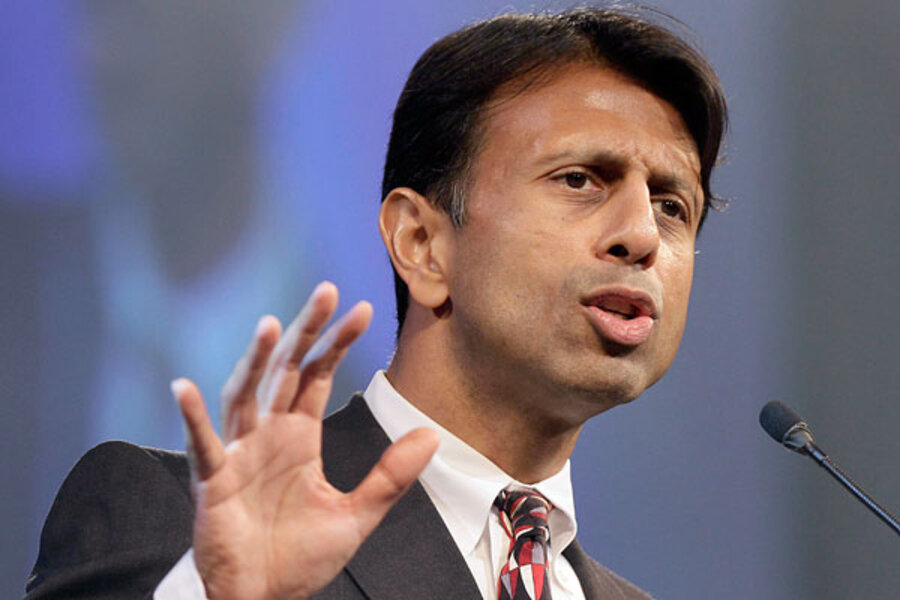Will your state taxes go up? How legislatures are leaning.
Loading...
America’s red-blue divide is growing more pronounced in state governments, and this rise of one-party politics – along with increasing revenues – is pushing states to consider bold changes in tax policy.
Republicans now control the legislature and governorship in 24 states, with several moving forward on plans to eliminate their income tax – a holy grail of the conservative movement.
Meanwhile, Democrats control 13 states, with several angling to raise taxes to finance new government spending – an idea that might have been seen as politically toxic even a year ago.
The opposite approach to taxes highlights the polarization of state politics, which has been building for the past decade but reached an apex after the 2012 election. The 37 states controlled by one party is the highest number since 1928, according to the National Conference of State Legislatures.
But it also suggests how American attitudes on taxation may be shifting. While Republicans appear to be doubling down on their conviction that low taxes drive economic growth, Democrats’ willingness to raise taxes suggests that, at least on the left, there is a fresh openness to at least some higher taxes after decades of virtually no support for new taxes across the American electorate.
In some ways, tax policy is one of the leading indicators of legislatures “shifting away from the middle,” regardless of single-party control, says Josh Goodman, staff writer for Stateline, the news service for the Pew Center on the States.
On the right:
- Kansas Gov. Sam Brownback (R) is proposing reductions to personal income taxes for the second year in a row, despite the fact that last year’s tax cuts put a $700 million hole in the budget.
- Louisiana Gov. Bobby Jindal (R) wants to eliminate all personal and corporate income tax this year while keeping the sales tax as low as possible. In the coming weeks, he will meet with legislators to work out the details of his plan prior to the legislative session in April.
- Gov. Dave Heineman (R) of Nebraska is proposing similar measures. He proposed that the state close business sales tax exemptions, accounting for $5 billion revenue losses per year, which he said will pave the way for the elimination of individual and corporate income taxes.
- North Carolina’s Senate President Phil Berger (R) is considering a proposal that would eliminate income taxes while increasing sales taxes, especially on services.
Those moves contrast strikingly with proposals and new laws in blue states:
- Massachusetts Gov. Deval Patrick (D) wants to increase income taxes and cut sales taxes in order to spend $34.8 billion more on education and transportation.
- Minnesota Gov. Mark Dayton (D) proposed to decrease local property taxes and the sales tax rate while increasing the income tax rate for high-income earners as well as closing tax loopholes. His plan would add $2.1 billion to revenues and cover the projected $1.1 billion deficit in the state's fiscal year 2014-15 biennial budget.
- During a special legislative session in May 2012, Maryland Gov. Martin O’Malley (D) signed a law that raised income taxes on individuals making more than $100,000 and a new top rate of 5.75 percent on income over $250,000.
- In California, voters approved Democratic Gov. Jerry Brown’s Proposition 30, which included a temporary income tax hike to get the state’s budget out of the red.
The economics of taxes is fiercely debated.
The American Legislative Exchange Council, a conservative public policy think tank founded by former Ronald Reagan economic adviser Arthur Laffer, advocates that states eliminate income taxes and put rigid limits on spending as a strategy to promote economic growth.
If Louisiana or Nebraska eliminated its income tax, the move would be historic, says Nicholas Johnson, a state fiscal policy analyst at the Center on Budget and Policy Priorities in Washington.
“No state has repealed their income tax since oil-rich Alaska did in 1980,” he says.
But eliminating income taxes is not a proven method for stimulating growth, say analysts. They say it places an unfair burden on middle and low-income earners, who spend a greater portion of their income on goods and services compared with high-income earners.
With surpluses occurring in many states, Democratic lawmakers see it as an opportunity to invest in infrastructure and programs that were put on hold during the recession, says Sujit CanagaRetna, senior fiscal analyst for the Council of State Governments.
For example, in Massachusetts Governor Patrick’s plan calls for increasing the income tax from 5.25 percent to 6.25 percent and cutting the sales tax from 6.25 percent to 4.5 percent, which would raise taxes on 50 percent of residents starting January 2014, if approved by the Democratic-controlled legislature.
“Patrick is going to pay for the investments by increasing revenues,” says Mr. Johnson. “To me that’s basic fiscal responsibility.”
State economies are still fragile and “now is not the time to go blowing a hole in revenue systems,” he adds.
One-sided policy is never the best idea, adds Kim Rueben, a senior fellow at the Tax Policy Center, a joint Brookings Institute and Urban Institute research organization.
On average, one-third of state revenues come from income taxes, according to the National Conference of State Legislatures. The nine states that don’t have income taxes have higher sales or property taxes. Ms. Rueben says a pragmatic approach is for states to diversify their tax bases, pulling from multiple sources at lower rates in order to reduce negative impacts from a still recovering economy.
“Pressure on state budgets is going to increase,” says Rueben. Public-sector pensions and increased health-care costs from an aging population will expand states’ financial obligations, and it is important for states to be economically flexible.
In some cases, those fiscal realities might prove more persuasive than partisanship. “The difference [from Congress] is that states have to get things done,” says Tim Storey, an election analyst for the National Conference of State Legislatures. “They can’t borrow money, so they have to pass balanced budgets. They have to constantly pass policies on big programs close to people – health care, education, and criminal justice.”
In other words, even with the supermajorities in state government, there is no guarantee that the diverging tax-reform proposals will pass.
“There is a clear tone that it’s time to stop the intense partisan bickering,” says Mr. Storey. “And this comes from leaders in both parties.”
Bipartisanship is needed to address three structural flaws in states’ tax codes, says Mr. CanagaRetna: sales taxes do not cover a majority of services, states cannot collect taxes on Internet purchases, and codes contain a huge number of exemptions supported by special interest groups.
“The tax-reform policies we are seeing now are efforts that are just nibbling at the edges of corroding state revenues,” he says.
He compares the situation to a leaky roof that needs to be replaced. Instead, lawmakers are running around with pots and pans trying to collect the water. “There are no resources to fix the roof, which is what is most needed.”






